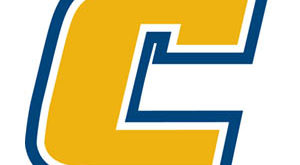By KIMBERLY MERFERT
High school and college students spend most of their time in school figuring out the best ways to cram eight months’ worth of education into three days of studying.
After the unavoidable procrastination leaves and the sheer panic of reality sets in, students are racing against the clock in order to memorize the best techniques available to obtain a passing grade on their final exams.
Thankfully, a 2013 study was published in Psychological Science in the Public Interest by Kent State University, Duke University, University of Madison-Wisconsin and the University of Virginia.

The study, called “Improving Students’ Learning With Effective Learning Techniques: Promising Directions from Cognitive and Educational Psychology,” broke down the top ten most used study techniques by students, and they have been ranked on a scale from having high utility to low utility.
The ten techniques measured were elaborate interrogation, rereading, highlighting, self-explanation, imagery use for text learning, distributed practice, practice testing, and the keyword mnemonic.
Based on the popularity, scalability, and how easy it was to use, the University groups performed individualized and group studies; evaluated characteristics, such as age and ability; studied the materials the exams were over; and estimated how criterion tasks changed performance levels.
“The researchers noted that many students are committed to using the less effective techniques of highlighting and rereading,” said Margaret Weigel, an author and researcher at The Journalist’s Resource, “and that this may be addressed by ensuring that students are taught how to implement proven successful study techniques.”
The techniques considered to be high ability, and concluded to have effectiveness and scalability, were practice testing and distributed testing.
These techniques were classified as high quality “due to its success across different ages and abilities to improve retention and outcome measures, its ease of implementation and scalability.”
Educational traits considered to have moderate ability were elaboration interrogation and self-explanation, as these traits contribute new information to prior known knowledge.
Self-education faced controversy, however, because “it is not clear whether these results are short-lived or lasting, and appears to be time-consuming to implement.”
Summarization, highlighting, the keyword mnemonic, imagery use for text learning, and rereading are the remaining techniques that fall into the low ability category.

Reasons for this pertained to the effectiveness of each tactic remaining unproven—or the fact they could not be properly measured at all.
The techniques most commonly used by students fell under low ability, such as highlighting and rereading, which studies showed that these popular techniques could actually “have detrimental effects on completing higher-level processing tasks.”
Researchers in this study concluded that further research would address gaps in the literature and help to refine these ratings.
 Mocs News Reporting the news that matters most to UTC
Mocs News Reporting the news that matters most to UTC




